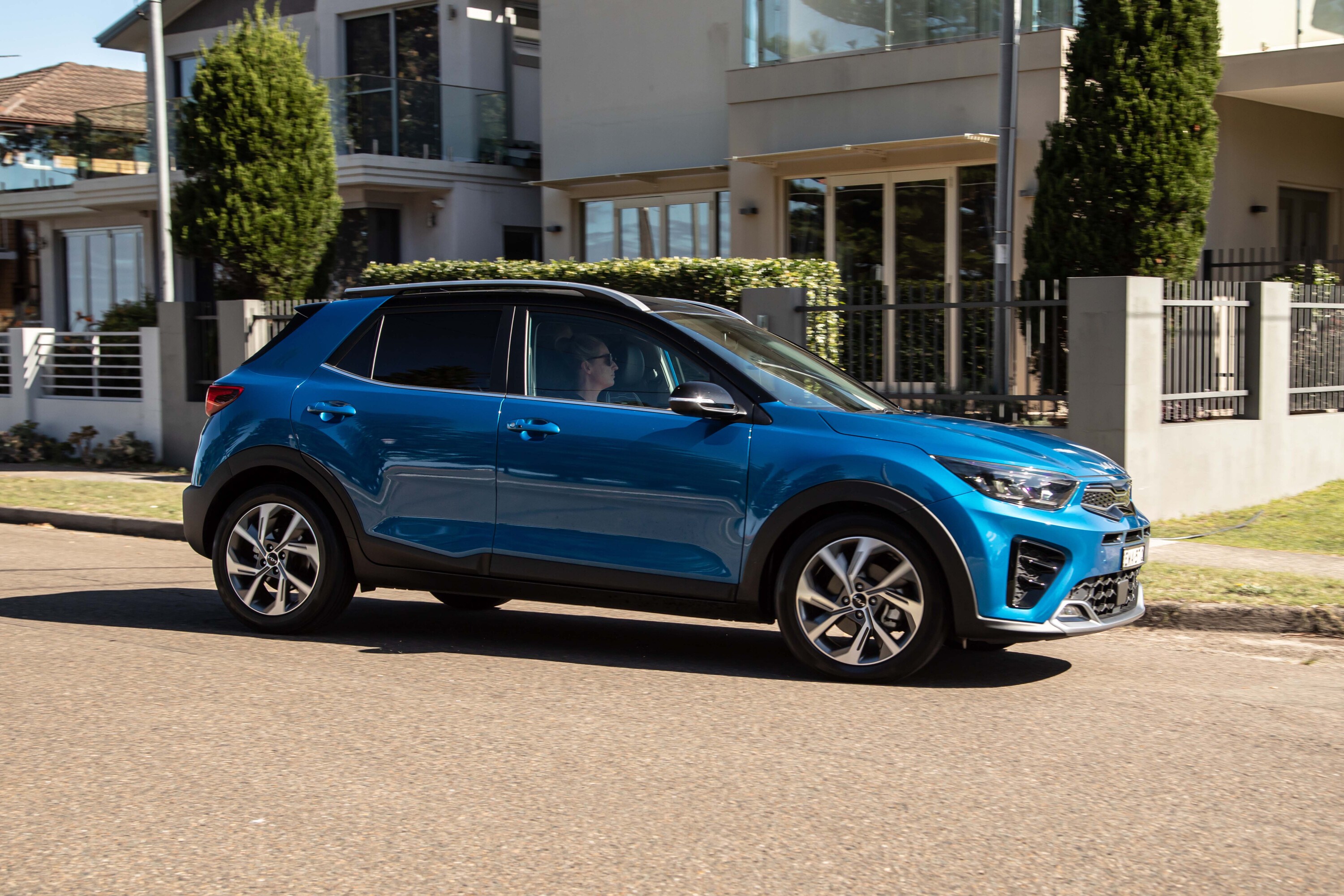Score breakdown
Things we like
- Fun to drive
- Great engine
- Reasonable value
Not so much
- Pricey servicing
- Skinny safety package
- Dithery transmission
Here is something that shocked me when I read it – the Kia Stonic is the second-best-selling light SUV in Australia. One in five of that segment is the raised Rio.
That genuinely surprised me. Not because it’s a bad car or anything like that, I just don’t notice that many of them on the road. The only car outselling it is the Mazda CX-3. And it’s in a segment with a lot of quality like the Ford Puma, Yaris Cross, Hyundai Venue and VW T-Cross.
For a car we weren’t supposed to get because Kia couldn’t make them fast enough, that’s pretty good going. It’s even better going when you consider that it’s hardly a spring chicken even though it’s only been here for just over two years – it’s now firmly on the wrong side of mid-life.
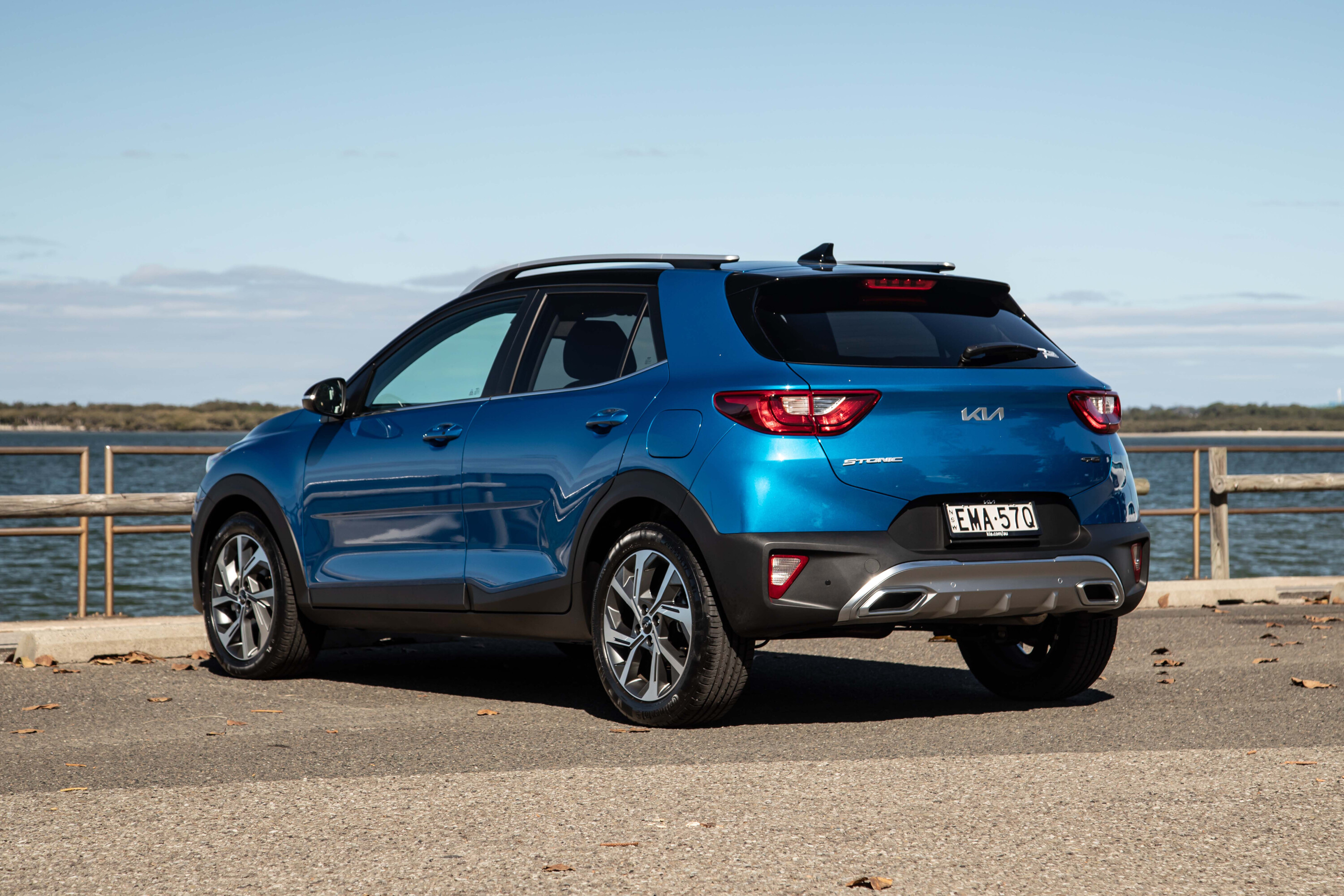
JUMP AHEAD
- How much is it, and what do you get?
- How do rivals compare on value?
- Interior comfort, space and storage
- What is it like to drive?
- How much fuel does it use?
- How safe is it?
- Warranty and running costs
- VERDICT
- Specifications
How much is it, and what do you get?
The Stonic range starts with a manual naturally-aspirated model for just $23,790 while this 1.0-litre turbo-petrol with dual-clutch automatic lands at $30,790 (both plus on-road costs), just $800 more than when it first launched.
What a rare sign of restraint from a car company in these inflationary times.
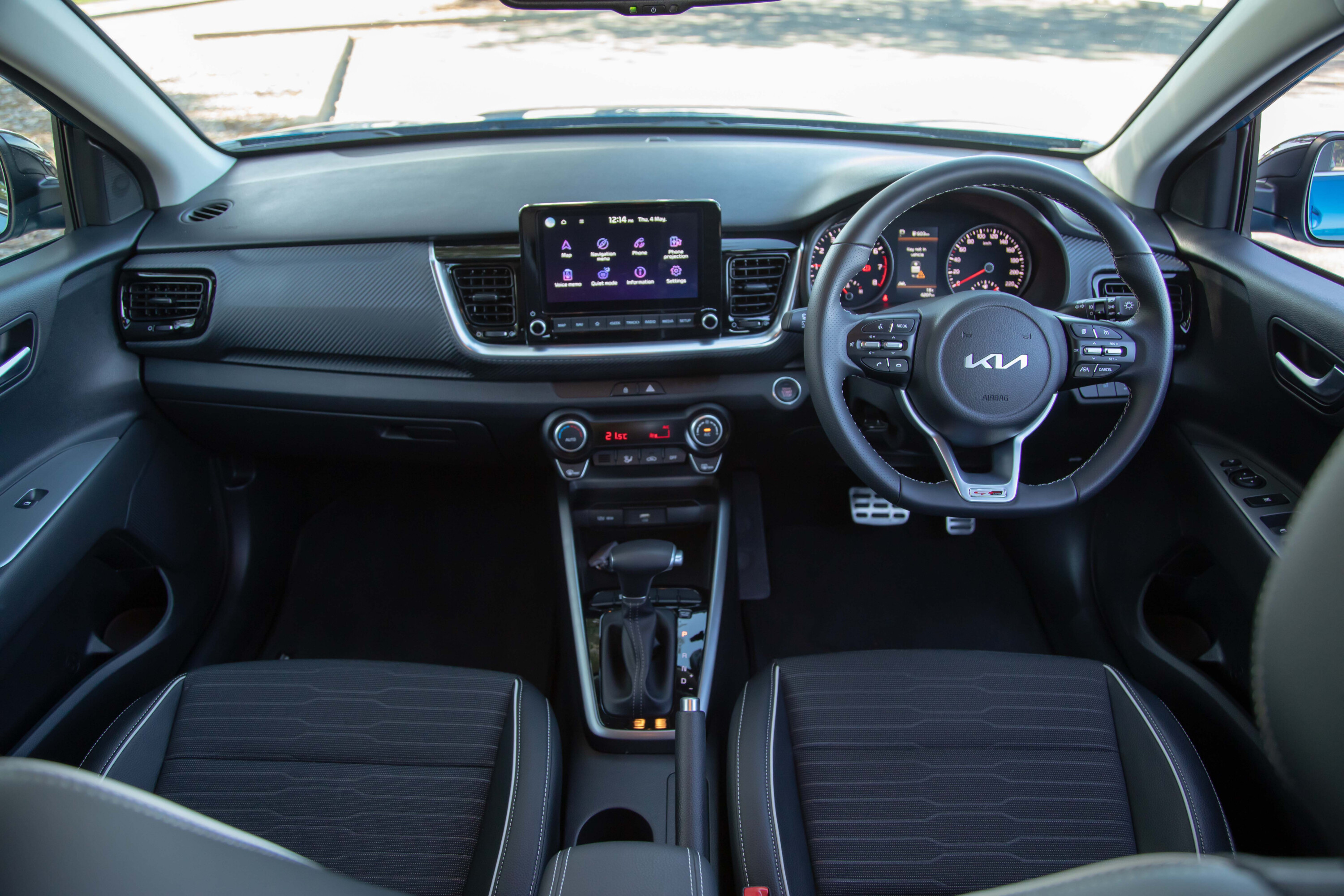
| 2023 Kia Stonic GT-Line standard features | |
|---|---|
| 17-inch alloy wheels | Six-speaker stereo |
| 8.0-inch touchscreen | Satellite navigation |
| Wired Apple CarPlay | Wired Android Auto |
| Leather steering wheel | Climate control |
| Reversing camera | Cruise control |
| Auto LED headlights | Auto wipers |
| Fake leather seats | Powered and heated folding mirrors |
| Sunroof | Keyless entry and start |
| Space-saver spare | |
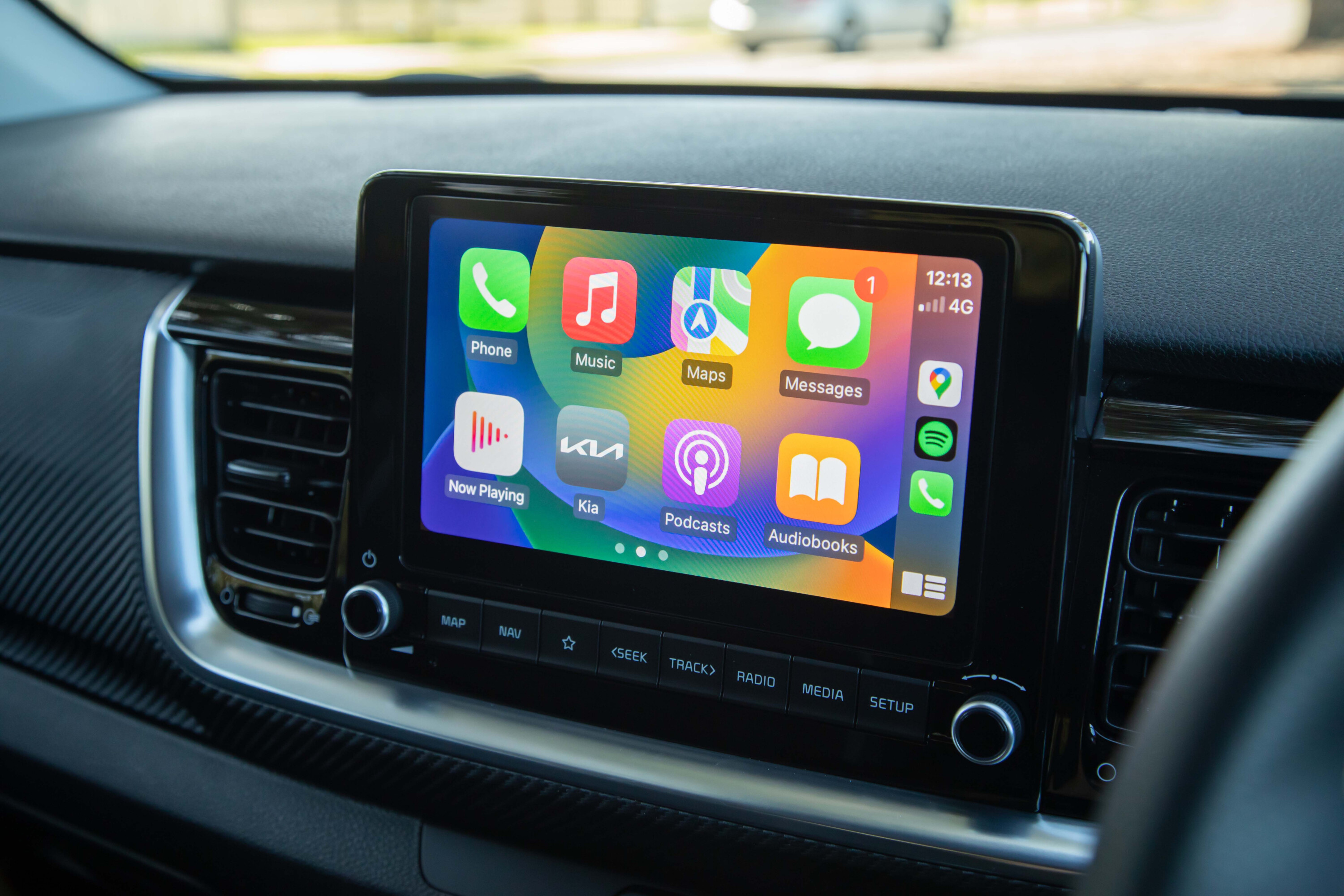
How do rivals compare on value?
The GT-Line doesn’t really have a direct competitor, but even at the top of its range, it’s still quite competitive.
Mazda’s cheapest automatic CX-3 runs to $28,260 (all prices here are before on-road costs) and doesn’t come with as much standard equipment but has a better interior and safety package.
The VW T-Cross starts at $30,990 and has a seven-speed dual-clutch auto hooked up to a 1.0-litre turbo-petrol, which sounds awfully familiar. It has a fun chassis, looks good and has a pretty good interior. It’s also the second-newest in the segment after the…
…Toyota Yaris Cross. That range starts at $27,840 for the naturally-aspirated 1.5 while the cheapest hybrid is $29,480, which looks like good value. It has a comprehensive safety package but a fairly dowdy interior apart from the front seats. Unbeatably cheap servicing, too.
Interior comfort, space and storage
As the Stonic is basically a raised Rio (Kia tells us the panels are all different, though), it’s much as you expect; roomy if not expansive.
Front-seat passengers have plenty of storage to play with, including a split storage box underneath the console for phone and wallet stowage. You also get two cup holders, even with the space-robbing conventional handbrake (I like a standard handbrake, though, so I didn’t mind too much).
Each front door has a pocket for a decent-sized bottle, but not so the rear doors. You get a USB port, too.
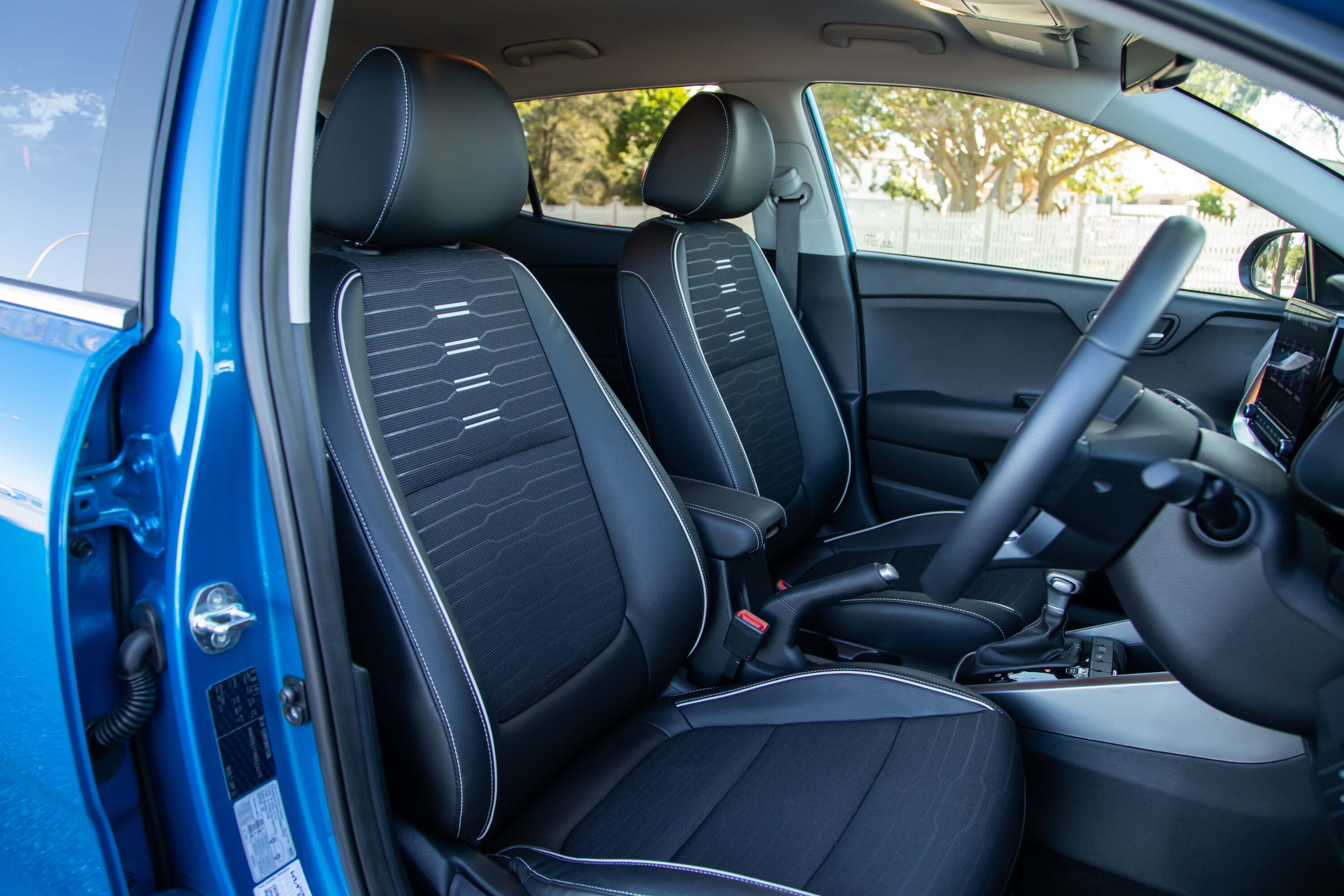
At 180cm in height, I can sit behind my driving position in the rear seat and while cat-swinging is off the table, there’s not much to complain about given the car’s tiny footprint. Well, actually there are a couple of complaints. There isn’t an armrest, so no cup holders and there are no air vents. The seat itself isn’t all that comfortable but will do around town.
Cargo space is an impressive 352 litres with the seats up and 1155 litres with them folded. With the seats out of the way, you don’t get a flat floor and there is a reasonable drop to the boot floor over the loading lip. The opening itself isn’t huge either, but again, this is a small car.
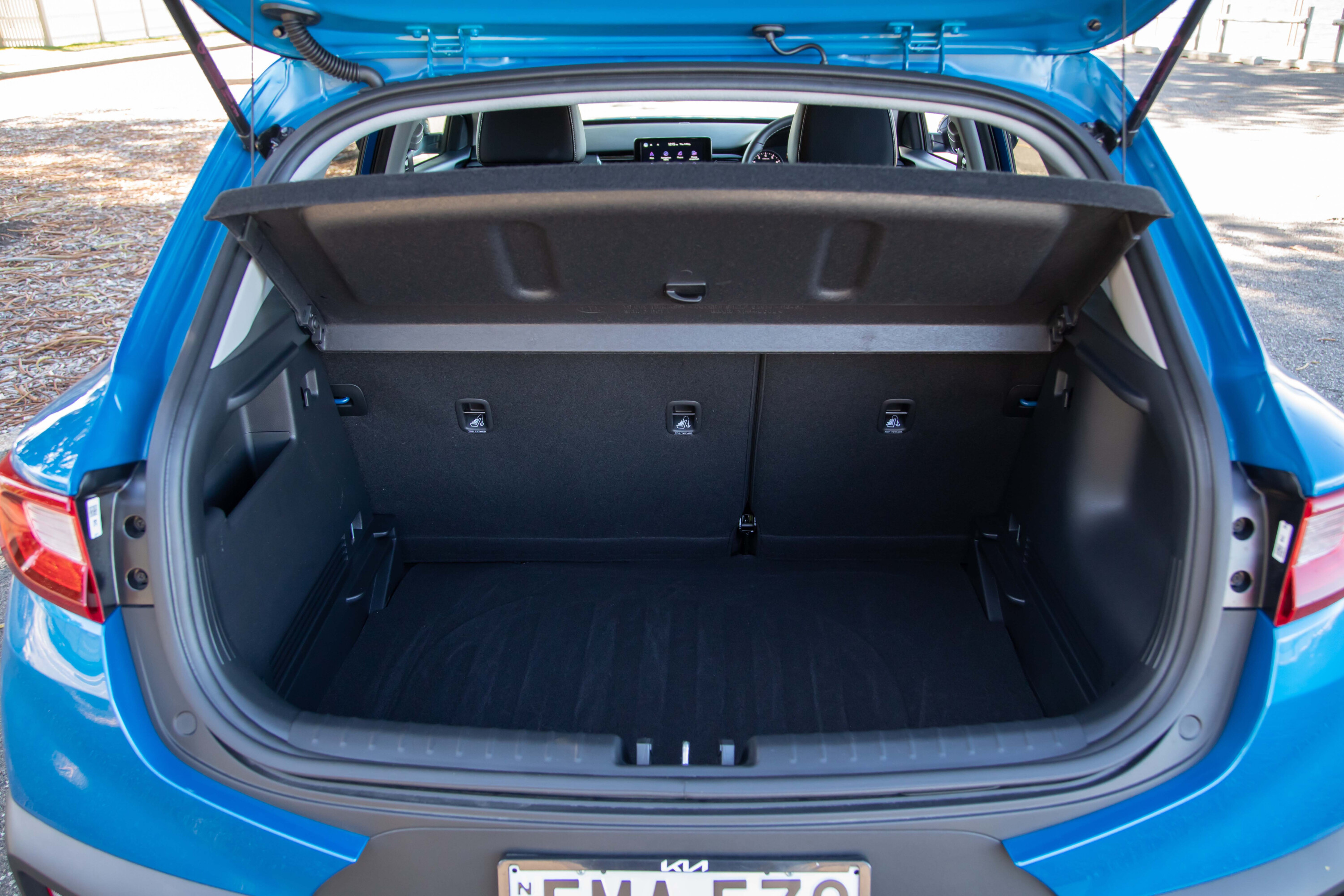
What is it like to drive?
The Rio GT-Line, the hilarious Picanto GT and Stonic GT-Line all share Kia’s 1.0-litre three-cylinder turbocharged engine.
| 2023 Kia Stonic GT-Line drivetrain | |
|---|---|
| Engine | 1.0-litre 3-cylinder turbo-petrol |
| Transmission | 7-speed dual-clutch |
| Power | 74kW @ 6000rpm |
| Torque | 172Nm @ 1500-4000rpm |
| 0-100km/h | 10 sec (estimate) |
And it’s a great engine. Characterful and torquey (172Nm to be precise), if not ultimately powerful at 74kW (let’s be fair, it’s a three-cylinder), it pushes the 1200-odd kilos of Stonic around with more than a little bit of flair.
Unlike its naturally-aspirated brethren, the gearbox is Kia’s slightly infamous seven-speed dual-clutch. It’s not bad, it’s just a bit hesitant and could do with a thorough recalibration to smooth out some of the clunky gear changes.
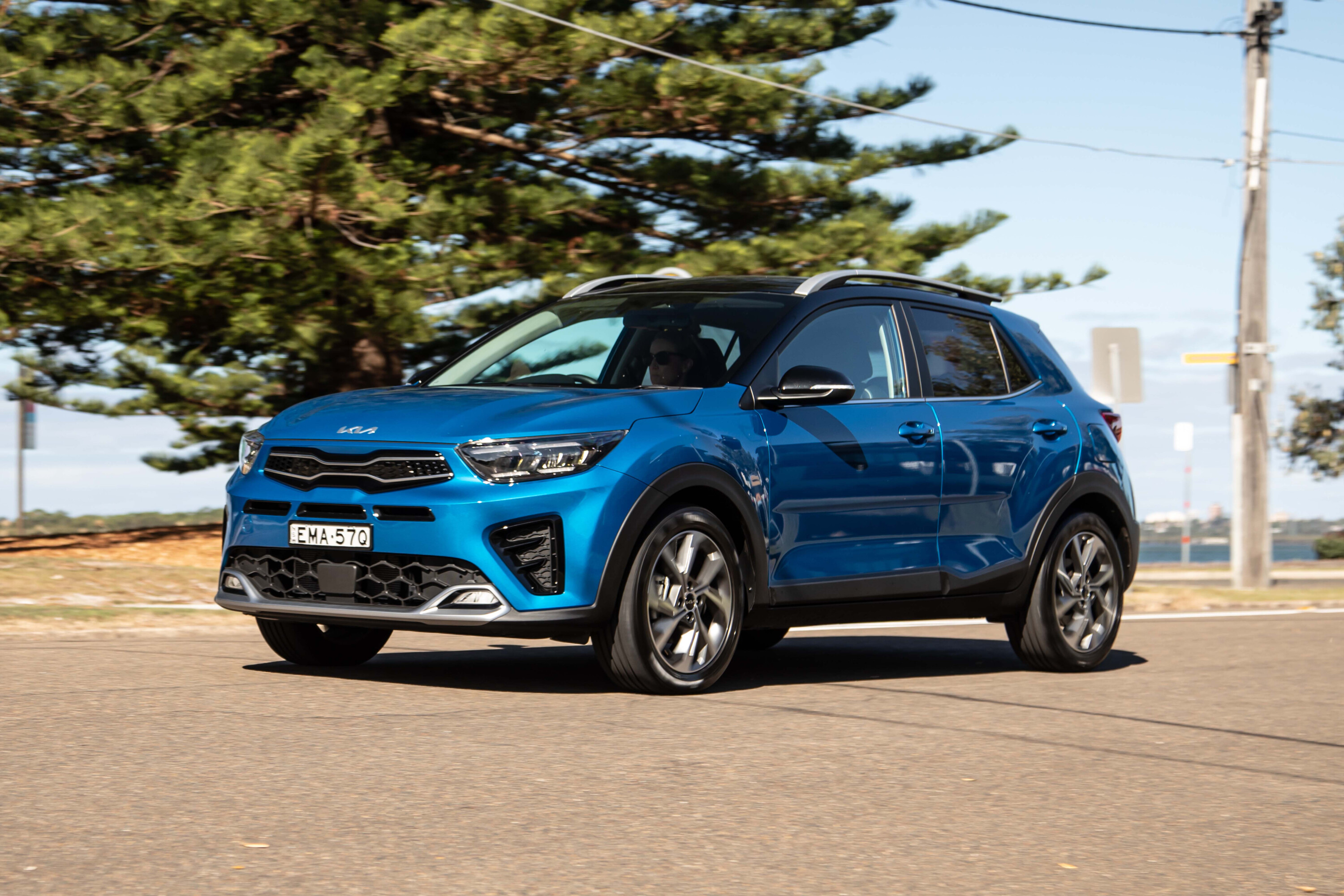
It sort of prefers you to be pressing on, the shifts being more suited to enthusiastic acceleration rather than pootling about. It’s oddly fine at parking speeds, though, and I didn’t experience a total reluctance to reverse up an incline as I did in a Rio GT-Line last year.
The extra pep of the turbocharged engine doesn’t overcome the chassis. The ride is quite composed for front-seat passengers but the combination of ordinary rear seating and a set of torsion beams packed underneath does mean a rougher ride than is strictly enjoyable.
I quite like the steering on the Stonic, too. It’s quicker than the Rio’s and with the amusing addition of a flat-bottomed but actually quite lovely wheel, it helps the Stonic feel a bit sportier than it really is.
If any of the terms in this section have left you scratching your head, these articles will help bring you up to speed!
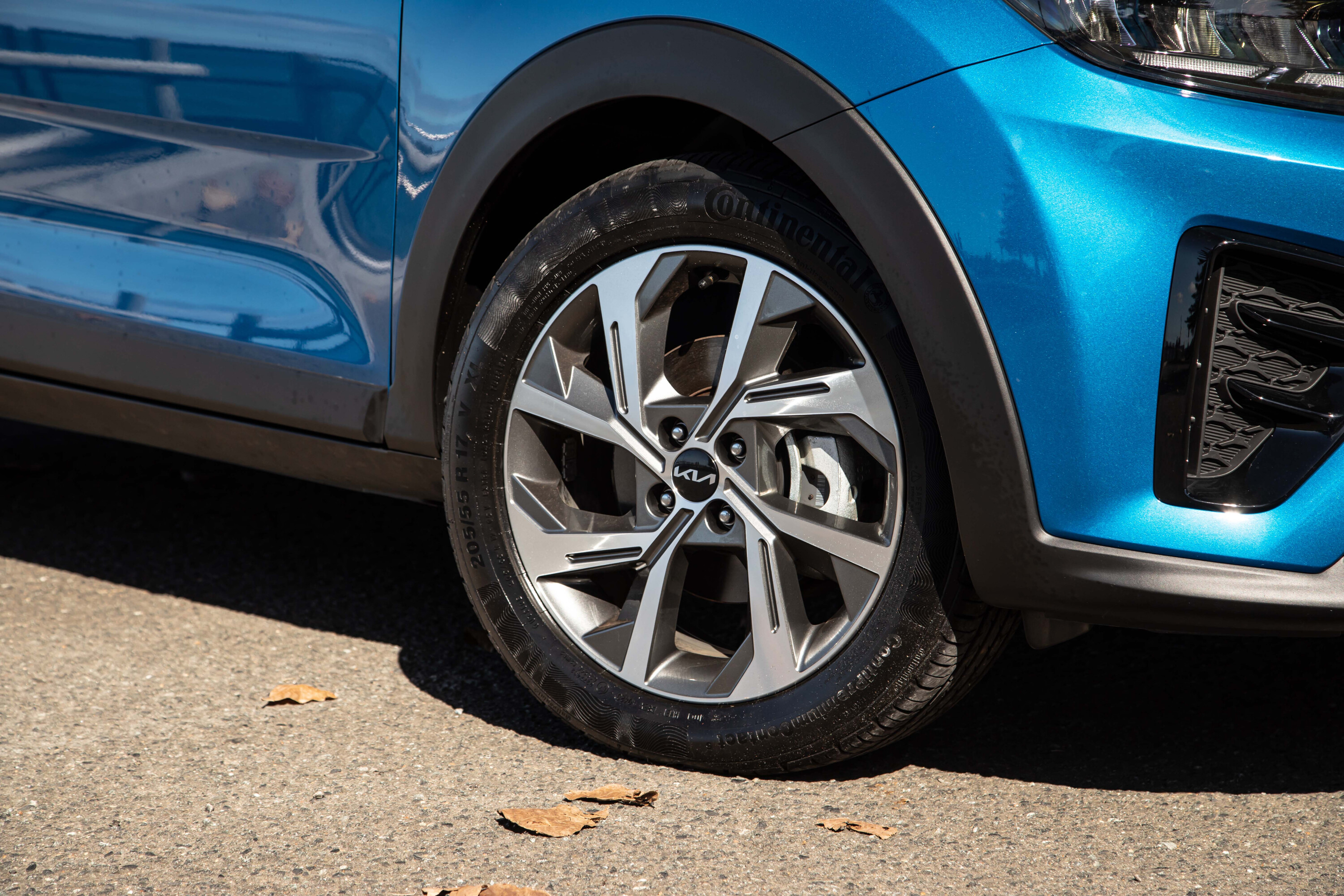
- What is a Powertrain or Drivetrain?
- Power vs torque
- Car suspension explained
- Automatic transmissions (‘gearboxes’) explained
- Chassis control systems explained
- Car vs Ute vs SUV: How the vehicle you buy should guide the way you drive
Kia’s fuel economy testing yielded an official combined-cycle figure of 5.4L/100km.
| 2023 Kia Stonic GT-Line fuel economy | |
|---|---|
| Claimed fuel consumption (combined) | 5.4L/100km |
| On-test fuel consumption (indicated) | 8.2L/100km |
| Fuel tank capacity | 45 litres |
| Projected real-world range | 548km |
| Fuel type | 91 RON |
While it might be a great engine, it’s not easy on fuel in the real world. Our time with the car was an even mix of highway and urban/suburban running, so the stop-start didn’t have a big impact on the number.
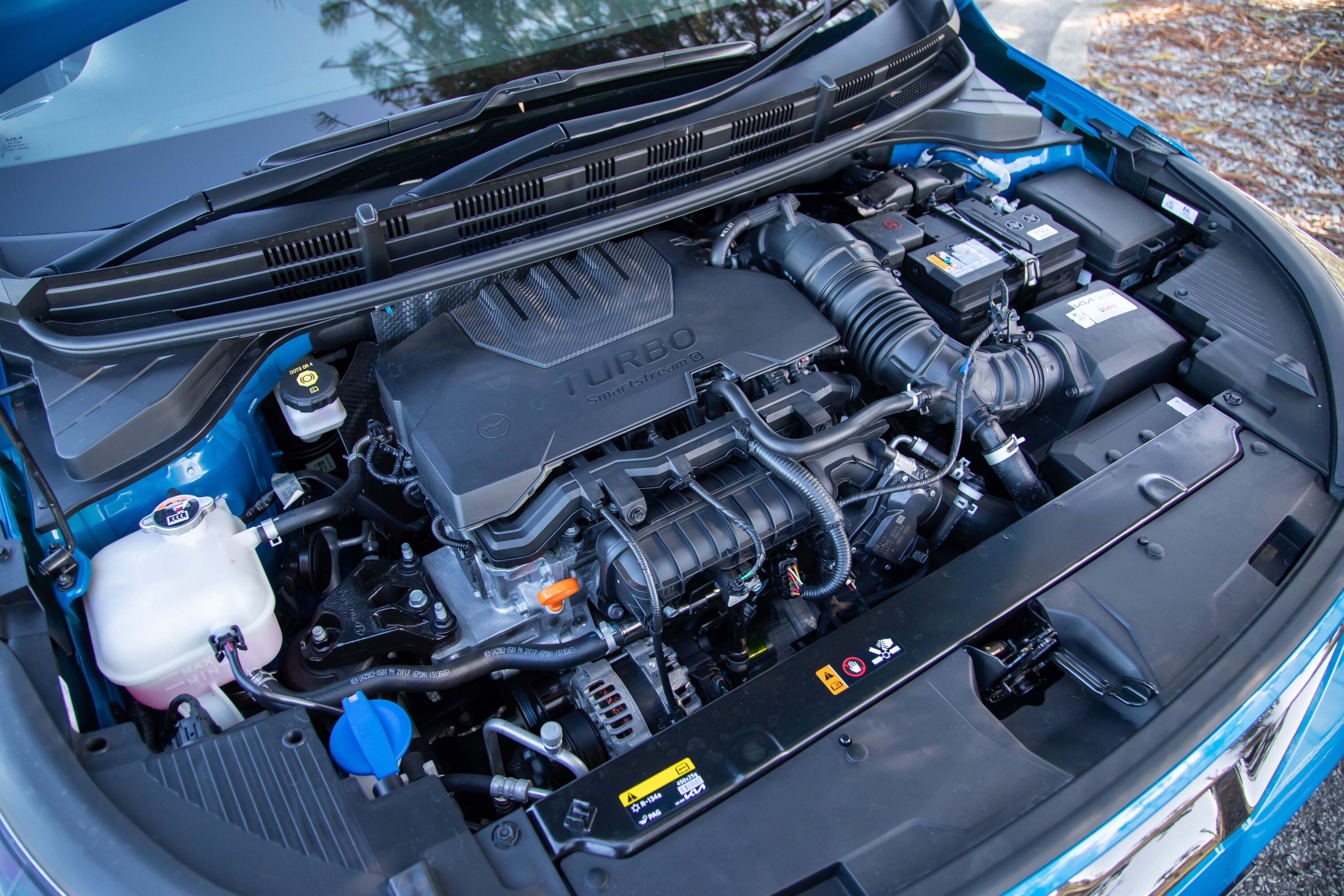
How safe is it?
The Stonic range shares the Rio’s five-star ANCAP rating, which was awarded in 2017 when the rules weren’t as tough as they are today.
ANCAP considers the two cars as variants of the same thing, so (eventually) applied the Rio’s rating to the Stonic range. This rating will expire in December 2024.
The forward auto emergency braking works with other cars and similarly solid objects from 5km/h-180km/h (with a solid tailwind, one would suggest) while pedestrian and cyclist detection works between 5km/h and 85km/h.

| 2023 Kia Stonic GT-Line safety features | |
|---|---|
| Six airbags | ABS |
| Stability control | Reversing camera |
| Forward auto emergency braking | Lane-keep assist |
| Lane following assist | Driver attention monitoring |
| Lead vehicle departure alert | Traction control |
The babies and kids are looked after with three top-tether anchors and two ISOFIX points.
It would be nice if this car had reverse AEB given it will likely be a popular choice for city dwellers and second-car buyers. After all, a similarly-priced Seltos has it.

Warranty and running costs
Kia offers a seven-year/unlimited-kilometre warranty, bettered only by Mitsubishi’s 10-year/200,000km warranty.
The Stonic GT-Line must be returned every 12 months or 10,000km, which is kind of rude as the non-turbo models are 12 months/15,000km.
Kia offers a capped-price servicing regime and it’s not cheap. Over seven years you’ll pay $3344. That’s $477 on average per service and the numbers ping around a lot from as low as $287 to as high as $724 depending on interval.
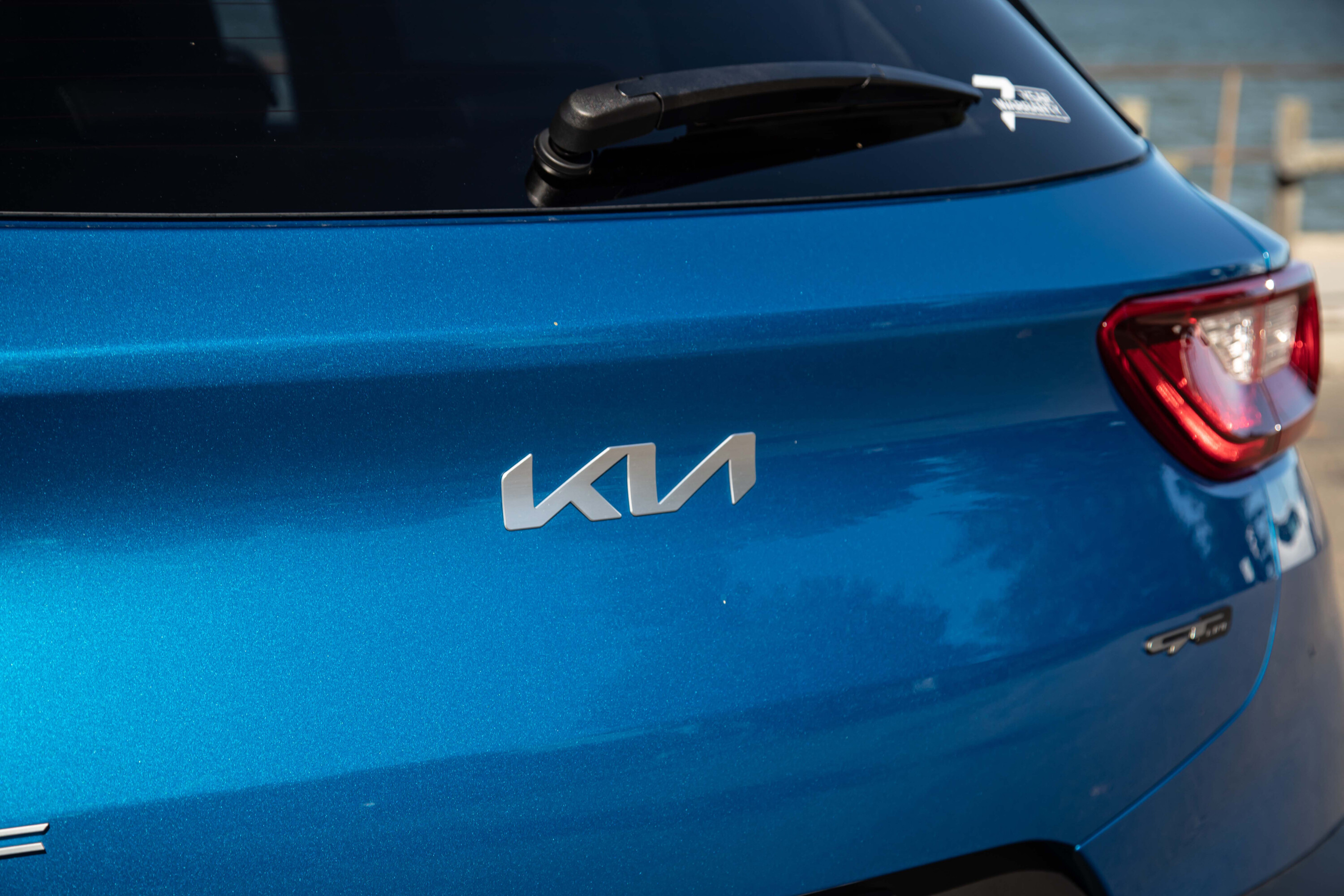
VERDICT
This is the kind of car that aims to win you over with its charms so you’ll forget its foibles.
You could be forgiven for thinking that the Stonic is a bit cynical; a barely disguised Rio on stilts. But the addition of that engine without the Rio GT-Line’s slightly teeth-chattering suspension means it has more than enough charm for most.
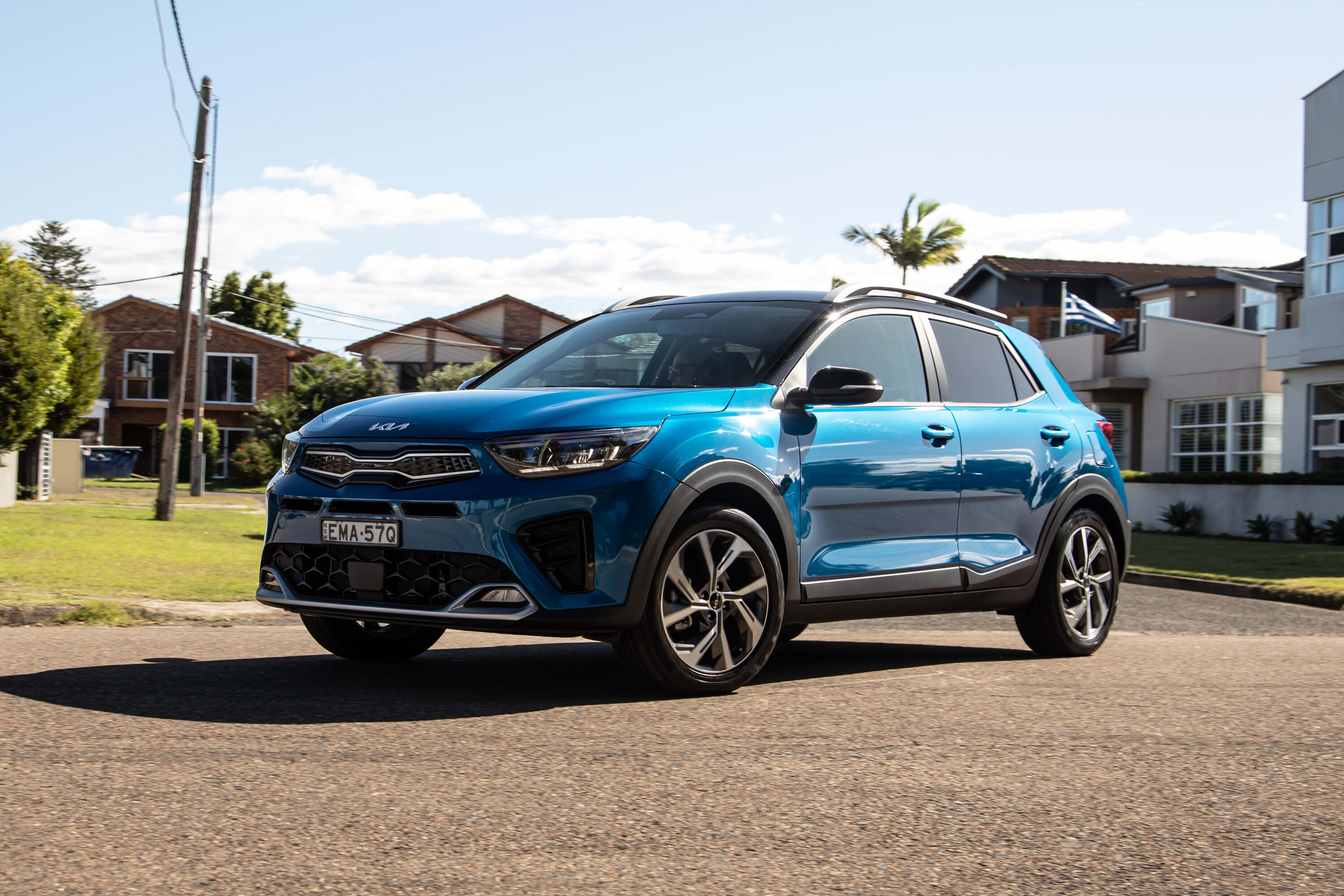
While I’m quite sure the GT-Line isn’t the top seller, it’s easily the best Stonic you can buy and I’d have it over the equivalent Rio.
| 2023 Kia Stonic GT-Line specifications | |
|---|---|
| Body | 5-door, 5-seat light SUV |
| Drive | front-wheel |
| Engine | 1.0-litre 3-cylinder turbo-petrol |
| Transmission | 7-speed dual-clutch |
| Power | 74kW @ 6000rpm |
| Torque | 172Nm @ 1500-4000rpm |
| Bore stroke (mm) | 71.0 x 84.0 |
| Compression ratio | 10.5 : 1.0 |
| 0-100km/h | 10 sec (estimate) |
| Fuel consumption | 5.4L/100km (combined) |
| Weight | 1127kg (tare) |
| Suspension | MacPherson struts front/torsion beams rear |
| L/W/H | 4140mm/1760mm/1520mm |
| Wheelbase | 2580mm |
| Brakes | ventilated discs front / solid discs rear |
| Tyres | 205/55 R17 Continental |
| Wheels | 17-inch alloy (space-saver spare) |
| Price | $30,790 + on-road costs |
Score breakdown
Things we like
- Fun to drive
- Great engine
- Reasonable value
Not so much
- Pricey servicing
- Skinny safety package
- Dithery transmission
We recommend
-
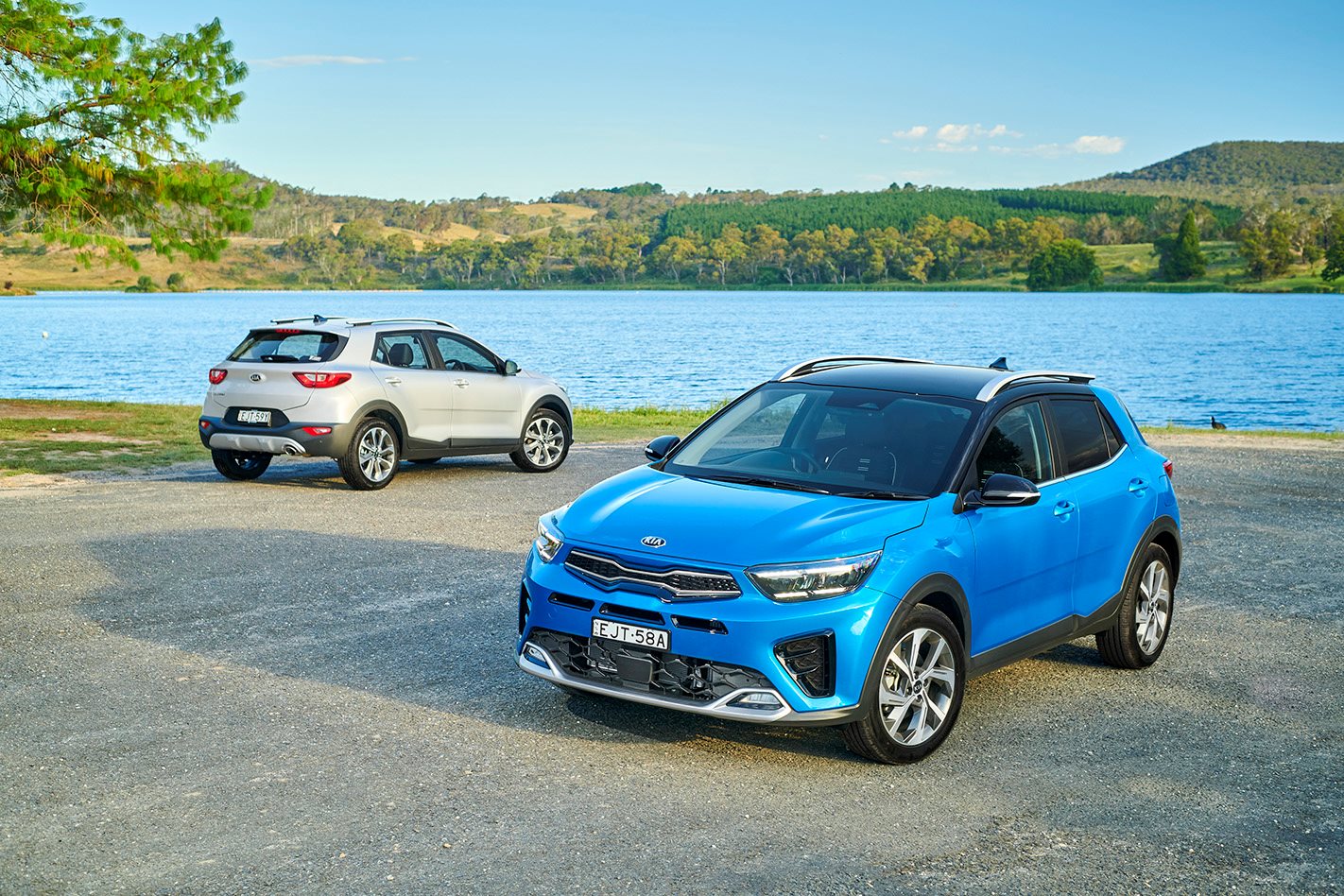 News
News2021 Kia Stonic pricing and features
Full details on Kia's rival for the Mazda CX-3, Toyota CH-R and Hyundai Venue.
-
 Reviews
Reviews2021 Kia Stonic S review
How does the Kia Stonic S fare as an everyday compact SUV?
-
 News
News2025 New Car Calendar: All the new cars coming to Australia
Take a look at our list of what is expected to launch in Australia in 2025 – plus those we might not see locally just yet


